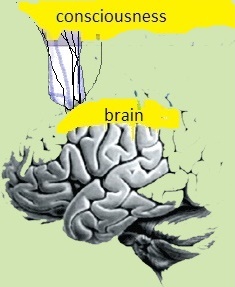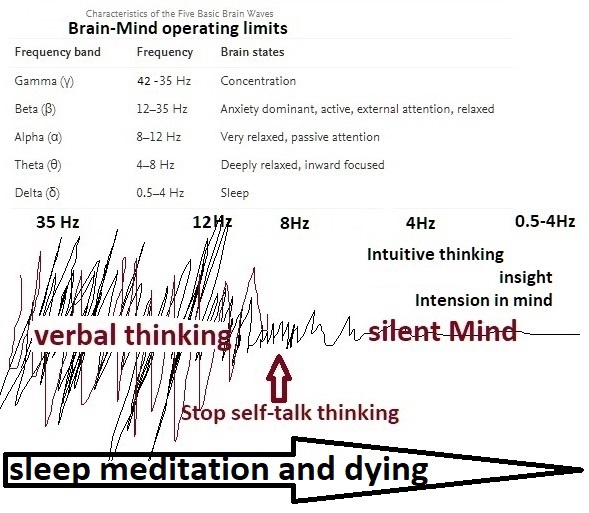I am answering this question from what I experientially know of the process of thinking and brain frequencies and time in the mind and then extending my answer from research done on unconsciousness to show what I have already realised of the mind can extend into what is being discovered by scientists.
What we might discover about ourselves with this question:
Personality and subjective thinking make our world grow more modular just like the brain gets more modular as we fall into unconsciousness.
The brain working like a mini Universe.
The brain was created by the Universe in its own image.
I discovered recently that I can also explain this whole flow of the mind from the active state in mind to the silent passive state of the mind in terms of time in the mind. When the mind is busy the sense of time moves faster in the mind and when the mind is silent and the brain frequencies are on the low side, time in the mind can seem to slow down. Notice that our watches tick constantly 24 hours a day and do not speed up or slow down but in the mind, time can be fast and slow. So I asked myself the question, is the establishment and experiencing enlightenment in the mind is really the process of slowing down, time in the mind.
So look at what research says about what is happening in our brain and mind when we become unconscious:
- “These studies come from a long-standing hypothesis my colleagues and I have had regarding the essential characteristic of why we are conscious and how we become unconscious, based on patterns of information transfer in the brain,” says George A. Mashour, M.D., Ph.D., professor of anesthesiology, director of the Center for Consciousness Science and associate dean for clinical and translational research at the University of Michigan Medical School.
- “We’ve been working for a decade to understand in a more refined way how the spatial and temporal aspects of brain function break down during unconsciousness, how we can measure that breakdown and the implications for information processing,”
- “I published a theoretical article when I was a resident in anesthesiology suggesting that anesthesia doesn’t work by turning the brain off, per se, but rather by isolating processes in certain areas of the brain,” Mashour says. “Instead of seeing a highly connected brain network, anesthesia results in an array of islands with isolated cognition and processing.
- “It’s often suggested that different areas of the brain that typically talk to one another get out of sync during unconsciousness,”
- “We showed in the early stages of sedation, the information processing timeline gets much longer and local areas of the brain become more tightly connected within themselves. That tightening might lead to the inability to connect with distant areas.”
- “We demonstrated that as the brain gets more modular and has more local conversations, the measure of information integration starts to decrease. Essentially, we looked at how the brain network fragmentation was taking place and how to measure that fragmentation, which gives us the sense of why we lose consciousness.”
- “We found that during unconsciousness, disrupted connectivity in the brain and greater modularity are creating an environment that is inhospitable to the kind of efficient information transfer that is required for consciousness.”
But then this:
“For example, we may assume that a patient is fully unconscious based on behavior, but in some cases consciousness can persist despite unresponsiveness.”
So it seems there is unconsciousness in terms of responsiveness of the body-mind, but, consciousness can persist in the person, despite unresponsiveness.
So it looks like the parts of the brain that gives our mind and body their presence in the living space, starts to separate and stop communicating with each other and we become unconscious.
I don’t know if you see similarities in how unconsciousness helps us to understand how the Universe works in sync with everything in it and how society works or does not work when we stop talking to each other due to subjective thinking and cultural differences and opinions and ideas about this and that kind of state on the planet today as we separate further and further away from each other just as the different parts of the brain separate and stop communicating with each other.
Does the working of the whole of the mind, and seeing what happens when we become unconscious, help us sense that we might be operating off a larger pattern in the Universe that is also reflected in all its smaller parts. As science is beginning to find out that the smallest particle in the Universe also has the whole universe in it and that is how the Universe functions and communicate with everything else in the Universe. We are all just ONE-THING working off one big pattern in the Universe.
Can seeing how becoming unconscious also help us see the wholeness of the Universe. The brain working like a mini Universe. Is this discovery part of the enlightenment process of knowing thyself or is it only at the ends of the mind where there is nothing in mind and in the samadhi state of mind which we think is where enlightenment is realised. I think meditation and Samadhi is only part of the process of discovering the wholeness in us and how we are part of the Universe. The brain is like a mini Universe. The brain was created by the Universe in its own image. The evolution process is coming off the ether. Is enlightenment in the mind about finding this wholeness between the body and mind looking for its place in the Universe.
Personality and subjective thinking make our world grow more modular just like the brain gets more modular as we fall into unconsciousness.
Reference:


